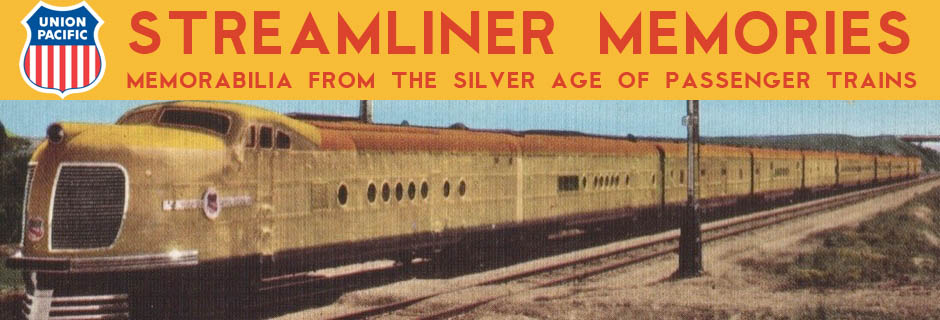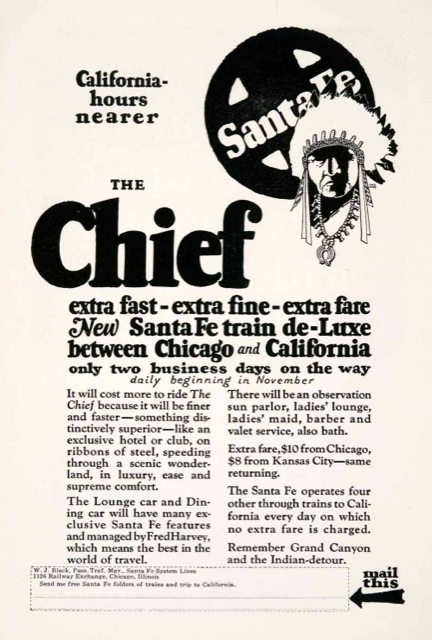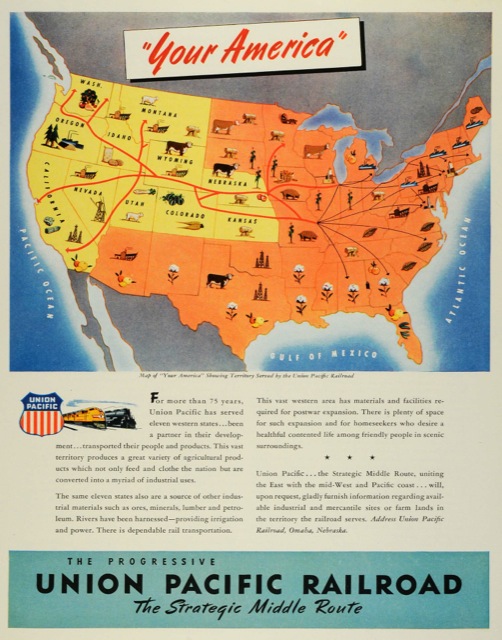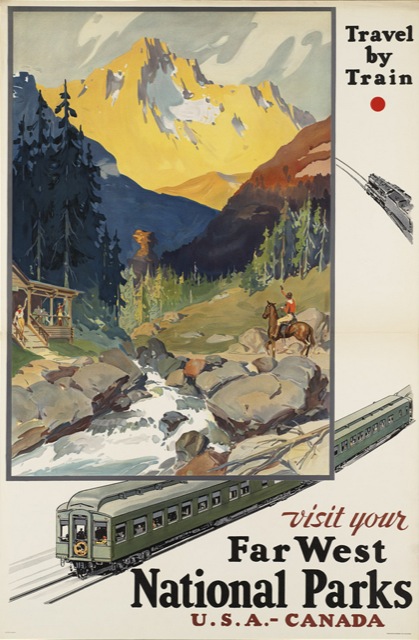In addition to his Travel by Train poster, Oscar Bryn did a number of posters and paintings for the Santa Fe Railway. The most famous is his Arizona poster, which looks as if it could have been one of the Travel by Train posters modified for Santa Fe use, but actually dates to 1949, fifteen years after the Travel by Train campaign. Like Bryn’s other Travel by Train poster, this is richly colored but flat, giving a fair representation of the impression people have of the Grand Canyon even if it doesn’t look much like the real thing.
Click to view a 2.1-MB JPG of this poster at 2,500×3,475.
Bryn was born on Honolulu in 1883 but grew up in the San Francisco Bay Area where he studied at the Mark Hopkins Art Institute (Hopkins being one of the “Big Four” founders of the Central Pacific and Southern Pacific railroads). He worked in the San Francisco Chronicle‘s art department and did some illustration for the Southern Pacific’s Sunset Magazine.










